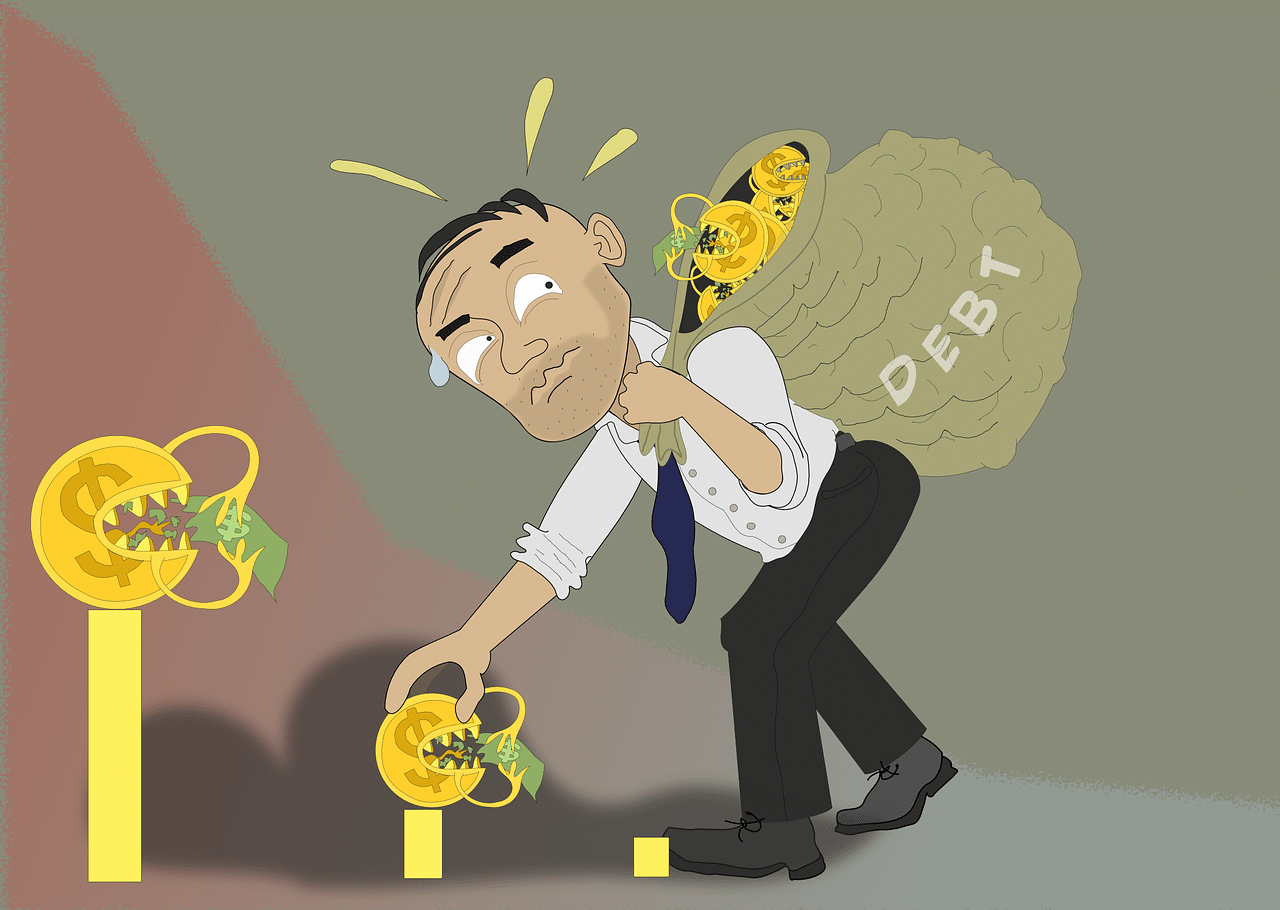There’s nothing unusual about being in debt in today’s America. From astronomical student loans to crippling credit card interest, it seems most us are carrying a financial burden from month to month.
According to Thomas Richardson, a clinical psychologist with the United Kingdom’s National Health Service, there’s a connection between debt and mental health. In his studies, Richardson found that stress from debt could increase the risk of eating disorders, alcoholism, and anxiety.
Of course, having some debt isn’t such a bad thing. Or to rephrase that, some good debt isn’t such a bad thing.
IMAGE: PIXABAY
Good debt generally consists of anything that could generate income and increase an individual’s overall worth. Debt like mortgages and student loans are typically referred to as good debt because the investments are designed to build a better financial future for the debtor. Houses, for example, have historically increased in value over time, and a college education increases our lifetime earning potential.
Bad debt, on the other hand, is a debt from purchases that quickly lose their value, does not yield long-term income, and carries a high-interest rate. Late credit card payments are a hallmark example of bad debt.
If you’re finding that you have a lot more bad debt than good debt, now could be the time to straighten your path.
Different Types Of Debt Relief
Debt relief could come in many forms: debt management, debt consolidation, debt settlement, bankruptcy, or through a combined approach of your own means. Unless you decide to employ these strategies on your own, you’ll likely pay a company a fee of some sort.
- Debt management involves restructuring your current payment schedules and interest rates. Your outstanding balances don’t change.
- Debt consolidation is like debt management in that you could be awarded lower interest rates and a different payment plan, but mostly because you’ll be taking out a new loan to cover your existing debts, in favor of only having one debt to focus paying off.
For more drastic scenarios, debt settlement and bankruptcy become options.
- Debt settlement is usually done through debt relief companies that negotiate with creditors on your behalf to have some of your debt forgiven. These companies will charge a fee either based on your initial debt amount or the amount of debt they’re able to save you.
Finally, bankruptcy can erase remaining credit card debts in exchange for decimating your credit score.
Debt Relief Companies
There are almost too many debt relief companies to choose from, which, combined with the stress most debtors feel, only adds to the mentally draining experience. If you don’t want to spend hours Googling, “accredited debt relief businesses,” “top debt relief providers”—or a personal favorite when one really gets into the debt relief rabbit hole and confusion ensues: “What is Freedom Debt Relief?” — then focus on a baseline criteria for which to evaluate each company.
Some Traits Reputable Companies Will Share
- Fees charged only after a debt has been settled and paid by the consumer.
- A commitment to doing their best, but language that’s free of guarantees.
- Expert advice on whether debt relief assistance is right for your debt level and situation while offering alternative strategies for those who may not qualify.
- Years of industry experience with a track record of successfully settling debts.
- Accreditation by the Better Business Bureau (BBB), American Fair Credit Council (AFCC), and/or the International Association of Professional Debt Arbitrators (IAPDA).
While some people may want to hear guarantees, any company offering them is not in a consumer’s best interest. Do your due diligence and ask the right questions to any debt relief company you’re considering.
Debt Relief Benefits
Every consumer’s situation is different. Not all will benefit from debt relief assistance. Some won’t even be eligible, depending on their level of debt. Here’s how people can benefit from debt relief programs:
Avoid Bankruptcy
Filing chapter 7 bankruptcy eliminates your debt. It also eliminates everything you own due to liquidation. Chapter 13 could allow you to keep your possessions, but you have to meet regular, court-ordered payments for three-to-five years.
Relieved Of A Percentage Of An Insurmountable Debt
Debt relief assistance could save you anywhere from 20 to 50 percent off your overall debt, or thousands of dollars. While you’ll have to give some of that back to the company in fees, at the end of the day you’re paying less than you what you owed, and you don’t have to go to court.
Faster Track To Financial Freedom
Chapter 7 bankruptcy only takes half a year, but again, you lose everything you have. Chapter 13 takes up to five years. Debt relief is a happy medium, taking as little as a year, and always within two-to-four years to resolve.
Every consumer’s situation is different. Debt relief isn’t a one-size-fits-all solution; it depends on the type of debts you have, the amounts of those debts, and whom your creditors are. However, you’ve nothing to lose by requesting free assessments or consultations. Remember: you don’t owe a company anything until they’ve successfully settled a debt and you’ve paid it. Good luck!
If you are interested in even more debt-related articles and information from us here at Bit Rebels then we have a lot to choose from.


COMMENTS